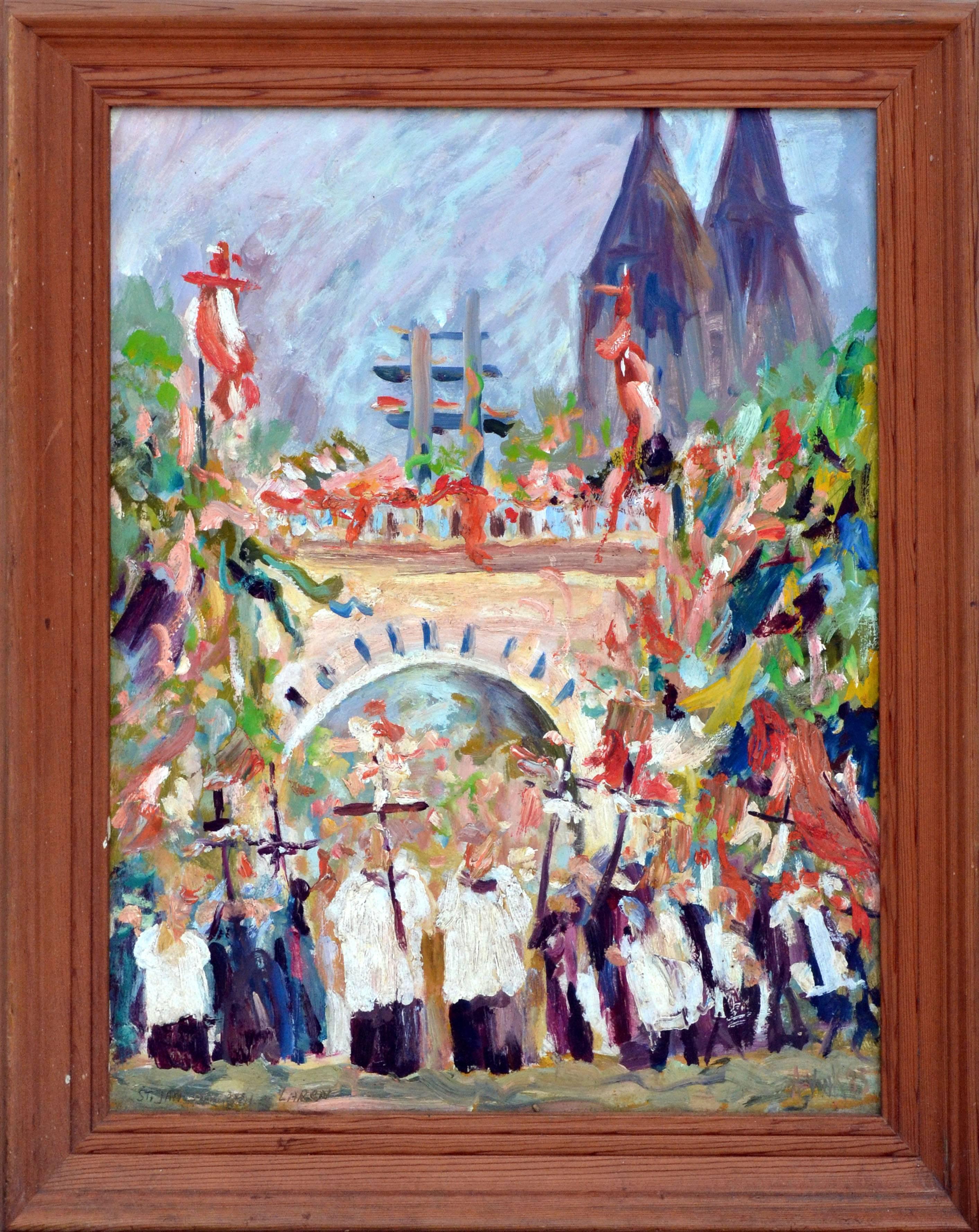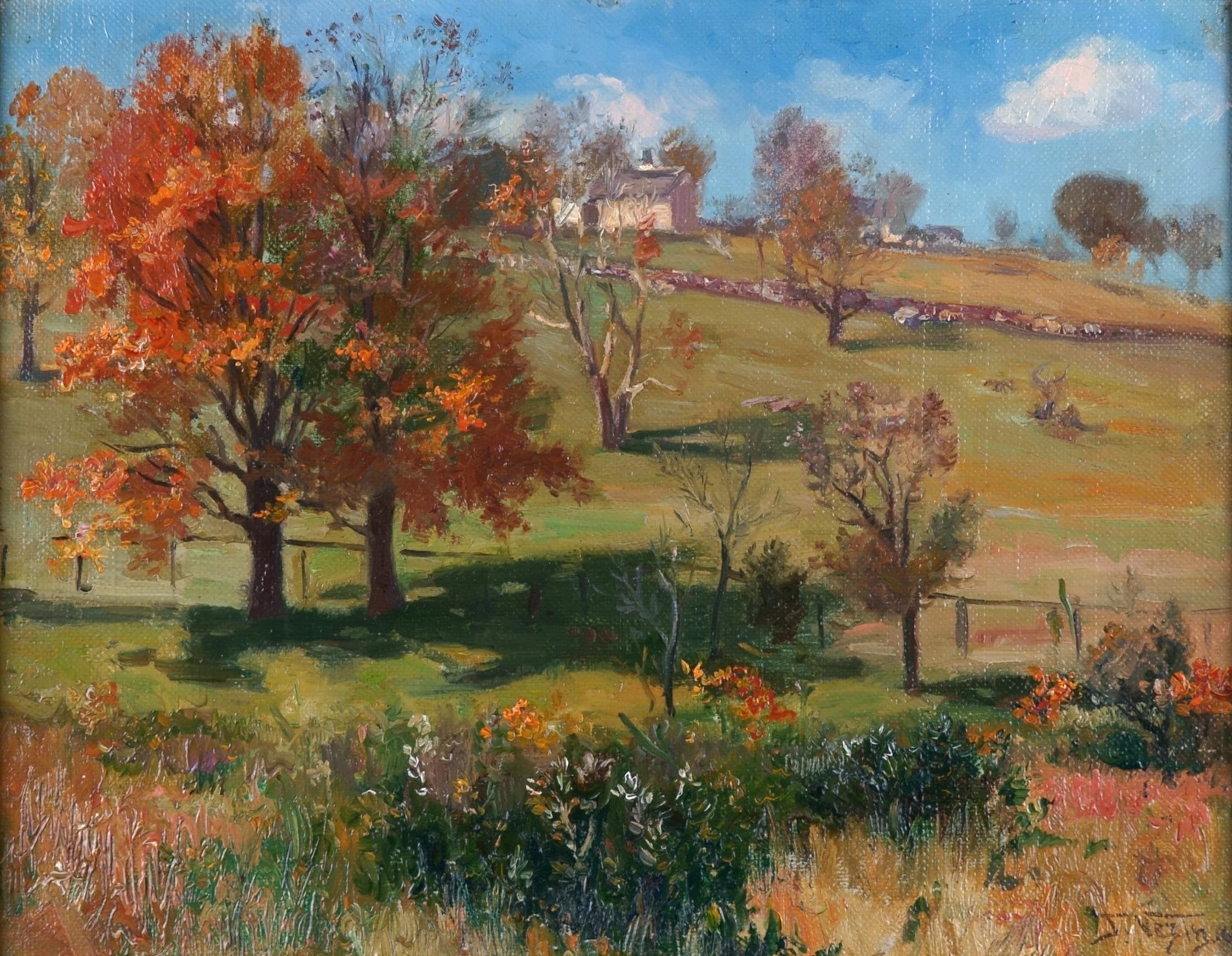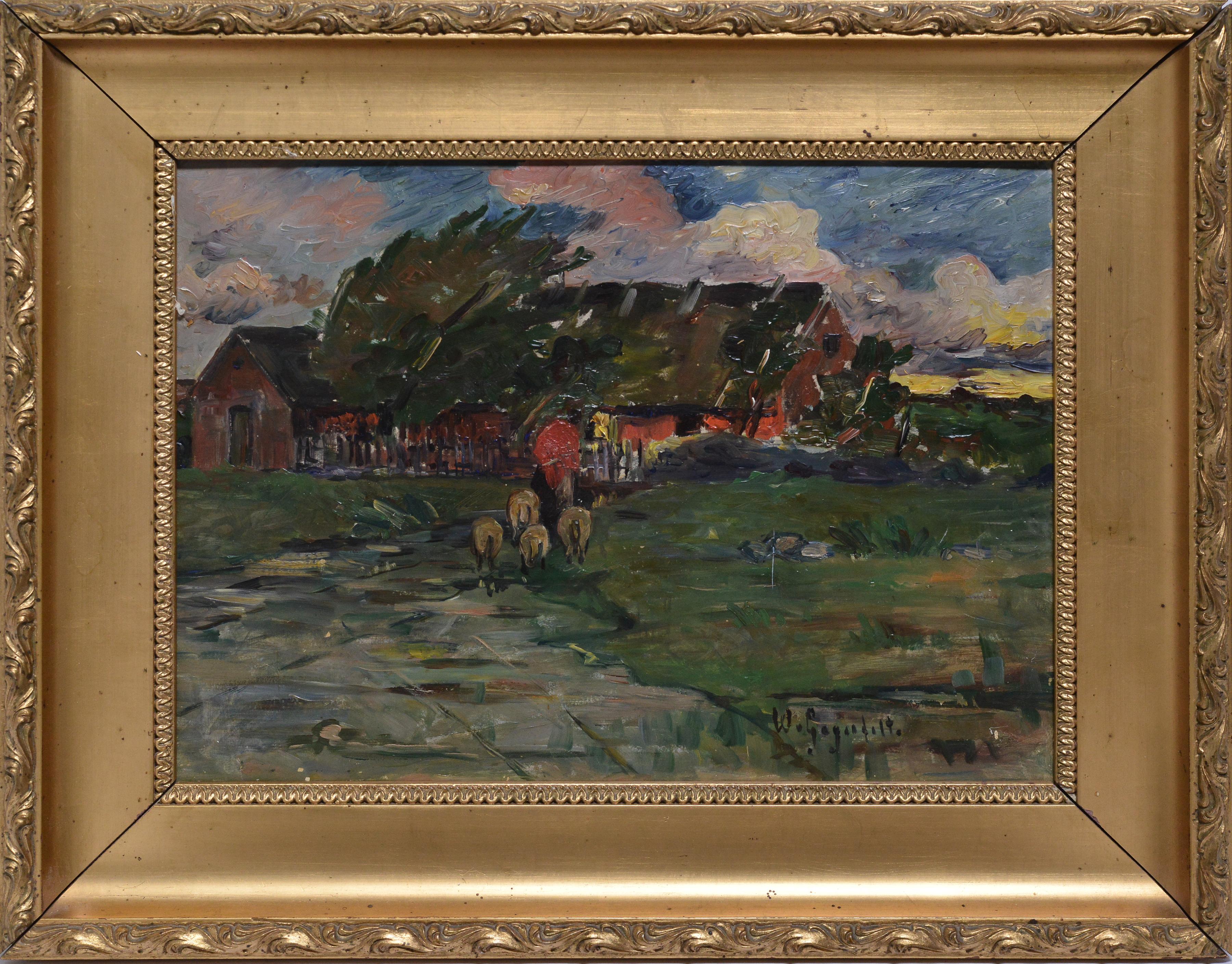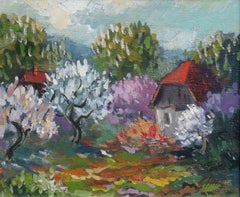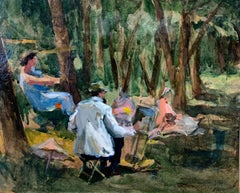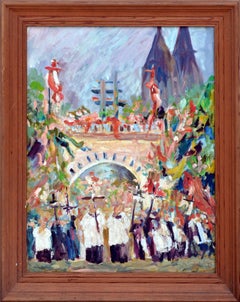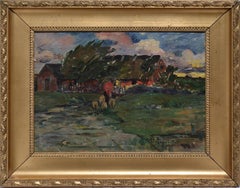Items Similar to Cardboard, oil. 7.5x9.5 cm
Want more images or videos?
Request additional images or videos from the seller
1 of 3
Antonio LetoCardboard, oil. 7.5x9.5 cm
About the Item
Cardboard, oil. 9.5x7.5 cm
- Creator:Antonio Leto (1844 - 1913, Italian)
- Dimensions:Height: 2.96 in (7.5 cm)Width: 3.75 in (9.5 cm)Depth: 0.79 in (2 cm)
- Medium:
- Movement & Style:
- Period:
- Condition:
- Gallery Location:Riga, LV
- Reference Number:1stDibs: LU1437212064022
About the Seller
5.0
Gold Seller
Premium sellers maintaining a 4.3+ rating and 24-hour response times
Established in 2002
1stDibs seller since 2020
188 sales on 1stDibs
Typical response time: 2 hours
- ShippingRetrieving quote...Shipping from: Riga, Latvia
- Return Policy
Authenticity Guarantee
In the unlikely event there’s an issue with an item’s authenticity, contact us within 1 year for a full refund. DetailsMoney-Back Guarantee
If your item is not as described, is damaged in transit, or does not arrive, contact us within 7 days for a full refund. Details24-Hour Cancellation
You have a 24-hour grace period in which to reconsider your purchase, with no questions asked.Vetted Professional Sellers
Our world-class sellers must adhere to strict standards for service and quality, maintaining the integrity of our listings.Price-Match Guarantee
If you find that a seller listed the same item for a lower price elsewhere, we’ll match it.Trusted Global Delivery
Our best-in-class carrier network provides specialized shipping options worldwide, including custom delivery.More From This Seller
View AllAsters. 1979, oil on board, 55x42 cm
Located in Riga, LV
Julijs Vilumainis (1909–1981)
Asters. 1979, oil on board, 54,5x42 cm
Category
1970s Impressionist Landscape Paintings
Materials
Oil, Cardboard
During flowering. Cardboard, oil, 23x28 cm
Located in Riga, LV
During flowering. Cardboard, oil, 23x28 cm
Category
1980s Impressionist Landscape Paintings
Materials
Oil, Cardboard
Port. Big Ship 1964. Oil on cardboard, 55x70 cm
Located in Riga, LV
Port. Big Ship 1964. Oil on cardboard, 55x70 cm
He learned at State Technique of Riga, architecture department.
1937 –Latvian academy of Art, landscape Studio of V. Purvitis, with ...
Category
1960s Impressionist Landscape Paintings
Materials
Oil, Cardboard
$2,094 Sale Price
20% Off
Ships in port Oil on cardboard, 56, 5x64, 5 cm
Located in Riga, LV
Ships in port. Oil on cardboard, 56,5x64,5 cm
He learned at State Technique of Riga, architecture department.
1937 –Latvian academy of Art, landscape Studio of V. Purvitis, with dip...
Category
1960s Impressionist Landscape Paintings
Materials
Oil, Cardboard
$2,094 Sale Price
20% Off
Ship repair. Oil on cardboard, 56x69, 5 cm
Located in Riga, LV
Ship repair. Oil on cardboard, 56x69,5 cm
He learned at State Technique of Riga, architecture department.
1937 –Latvian academy of Art, landscape Studio of V. Purvitis, with diploma...
Category
1960s Impressionist Landscape Paintings
Materials
Oil, Cardboard
$2,089 Sale Price
20% Off
At the Port. 1966, oil on cardboard, 56x69, 5 cm
Located in Riga, LV
At the Port. 1966, oil on cardboard, 56x69,5 cm
He learned at State Technique of Riga, architecture department.
1937 –Latvian academy of Art, landscape Studio of V. Purvitis, with d...
Category
1960s Impressionist Landscape Paintings
Materials
Oil, Cardboard
$2,094 Sale Price
20% Off
You May Also Like
" on vacation" Oil cm. 36 x 29 , 1959
Located in Torino, IT
Painter, vacation, summer, impressionism, picnic, 1950s
Russia,Green
Category
1950s Impressionist Figurative Paintings
Materials
Oil, Cardboard
$5,584 Sale Price
20% Off
The Procession at St. Lauren Holland - Figurative Landscape
Located in Soquel, CA
Figurative landscape painting of the Saint Jans Basilica and the Procession, Laren, Netherlands "Concept (After) Frits Hes (Dutch 1911-1972) of Hilversu...
Category
1980s Impressionist Figurative Paintings
Materials
Oil, Cardboard
Autumn Landscape in Sunlight - Indian Summer -
Located in Berlin, DE
Frederick Vezin (1859 Torresdale Philadelphia - 1933 Düsseldorf), Autumn Landscape in the Sunlight, oil on canvas, mounted on cardboard, 32 x 41 cm (inside measurement), 44 x 51 cm (frame), signed and dates lower right "F. Vezin. [19]05".
- Cardboard slightly curved, small inconspicuous retouch at the centre of the upper edge of the picture.
About the artwork
Although the painting appears to be a sketch, Frederick Vezin considered it to be a finished work of art, as evidenced by his signature on the lower right. And it is precisely this sketchy quality that leads to an understanding of the painting, which was certainly created in the landscape itself: the natural phenomena were to be depicted artistically at the moment of their observation. This is not done by meticulously sketching nature, but - and here Vezin follows the teaching of French Impressionism - by illustrating nature in its visual fullness. The artist's eye is, as it were, immersed in the visuality of nature, which is made visible by his hand. The painting is therefore not a reflection of the landscape, but its artistic intensification.
This intensification also includes the fact that the foreground of the painting - corresponding to the field of vision - eludes a detail-oriented close-up view. Instead, the spatula-like application of paint, the vertical structure of which corresponds to the structure of the floral growth, has the effect of making nature tangible in its colourful substance.
At the same time, the foreground, which remains indeterminate in its concrete objectivity, creates an atmospheric space that connects with the actual protagonist of the picture, the group of trees, which flares up in shades of red and brown. Here, too, the leaves are more speckled than clearly outlined. It is precisely this 'sketchiness' that opens up a visual experience that makes the landscape accessible in its visual fullness, thus revealing its essence.
In addition to this abundance, the landscape is presented as a structure of order in that the composition of the picture makes the composition of the landscape visible. For example, the group of trees forms a distinct dark green shadow, which is repeated in the shadows cast by the trees behind it. A patterned diagonal axis is created in the picture, which is composed in this way by the landscape itself.
Strictly speaking, this is a cultivated landscape: a fence at the bottom and a low stone wall at the top, running from left to right, are two elements that also have a strong compositional effect. And on the top of the hill, a stone house is embedded in the landscape as the brightest surface in the picture. Nature and culture here form a harmonious synthesis, giving the painting an Arcadian touch.
In order to give the landscape as much space as possible, the horizon line is raised, but the design of the sky is also crucial. The clouds, combined with the shapes of the trees, create a bright blue sky. To the European eye, such a sky is reminiscent of a summer landscape. Accordingly, within the seasonal cycle, the blue sky is reserved for summer, and French Impressionism is also primarily an ode to summer. In Vezin's painting, however, the brilliant blue sky stands above an autumnal landscape, some of the trees even defoliated. It can therefore be assumed that the painting was made not in Europe but in the United States, and that it illustrates the proverbial Indian summer, making Frederick Vezin a pioneer of American landscape painting.
About the artist
Frederick Vezin was the son of a French immigrant to the United States and a German-born mother. This predestined him to promote artistic exchange between the old and new worlds. Having spent part of his schooling in Germany, in 1876, at the age of 20, he enrolled at the Düsseldorf Academy of Art, where he studied with Peter Janssen the Elder, Eduard von Gebhardt and Wilhelm Sohn, among others. He graduated in 1883, settled in Munich and returned to Düsseldorf in 1895, where he lived until his death in 1933.
A native of the United States, he travelled to the country frequently and became a popular portrait and society painter. His artistic talent, however, was most evident in his landscape paintings. Trained in French Impressionism, he developed a virtuoso use of colour and a free brushwork that remained tied to the landscape motif, opening up the landscape itself in a new way. Frederick Vezin turned his attention primarily to the landscape of his homeland, becoming a pioneer of modern American landscape...
Category
Early 1900s Impressionist Landscape Paintings
Materials
Oil, Cardboard
Before Storm Vivid Landscape by Swedish Master 19th century
By Wilhelm von Gegerfelt
Located in Stockholm, SE
Attributed by Wilhelm von Gegerfelt (1844—1920). The disheveled crowns of the trees indicate to us the raging wind, and the evening sky in the background...
Category
Late 19th Century Impressionist Figurative Paintings
Materials
Wood, Oil, Cardboard
Barcelona view urbanscape oil painting Spain spanish
By Josep Marfa Guarro
Located in Barcelona, Barcelona
Josep Marfa Guarro (1928-2014) Barcelona Spain Oil
Oil on canvas glued to cardboard.
Oil measures 23x28 cm. Frameless.
Josep Marfa Guarro (1928-2014)
Josep Marfa Guarro was a Cata...
Category
1990s Impressionist Landscape Paintings
Materials
Canvas, Oil, Cardboard
$325 Sale Price
43% Off
Oil Sketch From Rome Called Ruins of Ancient Rome, c. 1870-72
Located in Stockholm, SE
This beautiful oil sketch, painted en plein air, was created by Swedish artist Olof Arborelius during his stay in Italy from the fall of 1870 until January 1872. The painting features a charming depiction of ancient Roman ruins—either a city wall or an aqueduct—surrounded by lush trees under the clear Italian sky. With loose brushstrokes and a soft, atmospheric touch, the artist captures the natural light and Mediterranean ambiance, demonstrating his profound understanding of plein air painting.
Arborelius was heavily influenced by French artistic trends of the time, particularly in his color sensitivity and study of light and air. His time in Italy was critical for his artistic development, marking the height of his mastery in capturing the delicate interplay of light, color, and atmosphere.
Several of Arborelius’ Italian oil studies, including similar small-format plein air works, were later exhibited at various prestigious exhibitions. These include the Svenska konstnärernas förening memorial exhibition in 1910, the Svensk-Franska Konstgalleriet in Stockholm in 1931, and a memorial exhibition at the Nationalmuseum in 1943.
Viggo Loos praised Arborelius' Italian studies for their "sensitivity to color" and "intense exploration of light and atmosphere," highlighting these works as a high point in the artist's career. Loos emphasized how Arborelius skillfully captured the essence of the Mediterranean landscape, using vibrant tones and delicate brushwork to convey the interplay of light and air.
Moreover, Folke Holmér, the curator of Arborelius’ 1943 memorial exhibition, described his Italian sketches as some of the most painterly pieces of his early production, worthy of comparison with the best works Swedish artists had produced in Italy.
Among his notable works in major collections are three of his Italian oil studies held at the Nationalmuseum: View from Rome Towards the Arch of Septimius Severus...
Category
1870s Impressionist Figurative Paintings
Materials
Paper, Oil, Cardboard
Recently Viewed
View AllMore Ways To Browse
Oil Paintings Rubens
Paris Rene Art On Canvas
18th C Italian Painting
Chevalier Oil Painting
Douglas Homer
Krishna Painting
Milano Oil Painting
Oil Painting Xix
Portrait British General
Portuguese Painting Old
Restaurant Poster
Spanish Bull Painting
Venus Master
19th Century Painting Mother And Child
Eve Gold
Oil Painting By Claire
Oil Painting Elephant
Xvii Oil Painting

